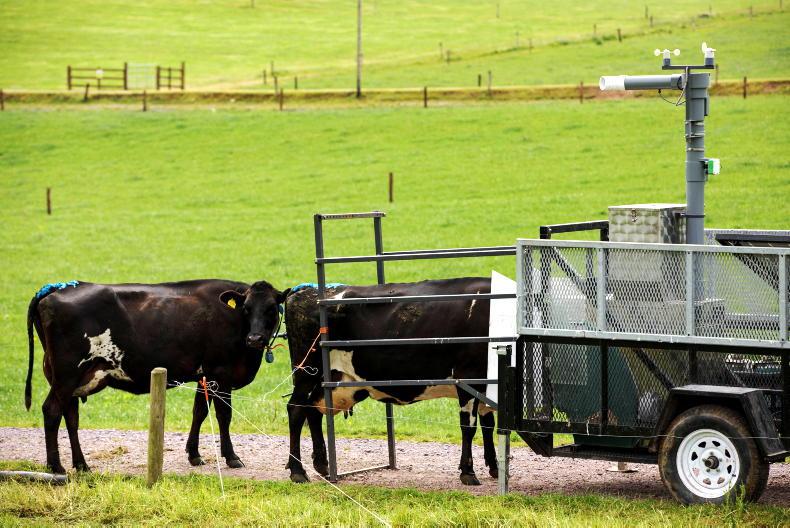Methane emissions from enteric fermentation are a byproduct of feed digestion within the animal’s rumen. Enteric methane accounts for 63.1% of total greenhouse gas emissions within the agricultural sector.
Given that the agricultural sector needs to reduce its greenhouse gas emissions by 25% by 2030 relative to 2018 levels, mitigating methane will be central to meeting Irish agriculture’s climate targets.
In recent years, Teagasc has started a research programme which aims to better understand and ultimately mitigate methane emissions in Irish grazing dairy systems.
Results from this research show that the methane output of Irish dairy cows at grass is lower than current models assume. This country-specific data will allow for more accurate accounting of methane at a national level. Results also demonstrate there is a seasonal nature to methane output at grass, with the lowest daily methane emissions observed in the spring period.
Getting cows outside
The lower methane emissions in the spring are related to highly digestible grass with low levels of fibre during this period. This means that, where conditions allow, getting cows out to grass earlier in the spring can be used as a strategy to reduce methane output on-farm.
In the main grazing season, methane can be reduced by ensuring grazing swards remain leafy and digestible by targeting the optimum pre-grazing covers (~1,400 kg DM/ha).
Research is also looking at feed additives as an avenue to reduce dairy cow methane output. These additives work by altering the rumen environment and preventing methane from being formed.
Research has demonstrated that some feed additives can reduce methane output by 20% to 30% when fed indoors. Within these settings, the additives can be mixed throughout the feed, meaning they are present in every mouthful of feed that the cow consumes.
In grazing settings, the most applicable method of feeding additives is in concentrate in the milking parlour twice daily. When additives are fed to grazing dairy cows in this manner they are effective for 2.5 hours following consumption.
During this 2.5-hour period, additives reduce methane output by ~30%. After 2.5 hours, methane returns to normal levels, with the total reduction across a 24hr period being ~6%. Future work aims to develop technologies which can increase the efficacy of feed additives over longer periods when fed to grazing dairy cows.






 This is a subscriber-only article
This is a subscriber-only article











SHARING OPTIONS: